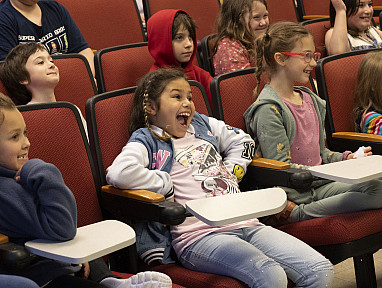The Indiana University Luddy School of Informatics, Computing and Engineering made its debut Sept. 6 at the Indy Autonomous Challenge with an AI-driven, 1,400-pound race car that reached speeds up to nearly 130 mph.
The leader of the IU team who raced the car at the Indianapolis Motor Speedway is Lantao Liu, associate professor of intelligent systems engineering and computer science on the Bloomington campus.
Liu is also director of IU’s Vehicle Autonomy and Intelligence Lab in Bloomington, which focuses on improving the autonomy and intelligence of robotic systems for unmanned ground, aerial and aquatic vehicles.
Altogether, more than 30 students —including recent graduates — contributed to the project.
Following averages of 111 mph and 121 mph, the Luddy School team’s race car achieved a 124-mph peak one-lap average around the Speedway’s iconic 2.5-mile oval — an achievement many thought impossible for a team with less than a year of developmental time. Several other teams had a four-year head start.
Hundreds of hours were spent writing code, analyzing data and building systems, Lui said. The Luddy School team’s lack of time with the race car ratcheted up the pressure, and many team members worked 12- to-14-hour days starting from the middle of July.
The Luddy team’s core members were Durgakant Pushp, Hassan Jardali, Youwei Yu, Mahmoud Ali, Paul Coen, Alejandro Murillo-Gonzalez, Ihab Mohamed, Md. Al-Masrur Khan, Saeoul Park, Lingchuan Zhou, Reddy Charan Pulivendula, Paul Quigley and Sam Huser, all Ph.D., master’s and undergraduate students at the school.
Explore a photo essay on this project at IU Experience
Other teams in the time-trial competition came from institutions in Korea, Germany and Italy, as well as U.S. universities.
“I received a lot of positive feedback from other teams and the Indy Autonomous Challenge,” Liu said, adding that officials from one team told him the Luddy car was faster than any previous first-year car. “Our team’s achievements stood out; I’m extremely proud of our students.”
“I feel relief,” said Pushp, a Ph.D. student in intelligent systems engineering and the team lead. “We accomplished something. We planned for it; we executed it; and we achieved it. Now, we have more confidence in the way we execute things.”

The Luddy team began working on the project in fall 2023 with a simulated car, then a smaller test car. But it didn’t get its real car — a $1 million IAC Dallara AV-24 powered by a 488-horsepower Honda racing engine, plus six antennas, two radar sensors, three lidar sensors, six optical cameras and three GPS — until about two months ago.
The team made rapid progress with testing time at Kentucky Speedway and the Indianapolis Motor Speedway. But hardware issues, along with a communication failure with the onboard computer, caused a crash two days before the Sept. 6 event.
After a midnight brain-storming session and an all-nighter, the team members believed they had figured out why the car entered emergency mode, froze up and hit a wall at 40 mph, damaging its front cone and wheel suspension.
“We worked on all the possibilities and went with our best solution because there wasn’t time for anything else,” Pushp said.
On the morning of the race, the car ran a flawless test at 95 mph. Then, in the afternoon, the Luddy School’s car completed five laps without a crash or a glitch — faster than it had ever gone — all without a human driver.
“This is like landing a rover on Mars,” Liu said. “We never tested; we ran that day; and it worked.”
This event isn’t just about racing for the thrill of competition, he added, noting that the benefits will extend to everyday life.
“A lot of what we’re developing can potentially be extended into consumer cars one day to improve the safety and reaction speed of future autonomous vehicles,” said Coen, a Ph.D. student in computer science.
“I am so incredibly proud,” said Joanna Millunchick, dean of the IU Luddy School. “There were those who didn’t think we could pull this off, but I was never daunted.”
Among the other supporters of IU’s team are Gene Renuart, a retired Air Force general and former commander of North American Aerospace Defense Command, who is advising the Indy Autonomous Challenge.
“I was very excited to see IU and the Luddy School with their own new team,” Renuart said. “For a novice team, they have done extremely well.”
The top car on Sept. 6 came from the University of Virginia’s Cavalier Autonomous Racing team, with a winning 171 mph lap average.
The next event in the Indy Autonomous Challenge will take place Jan. 7 at the Las Vegas Motor Speedway in Las Vegas, Nevada.



